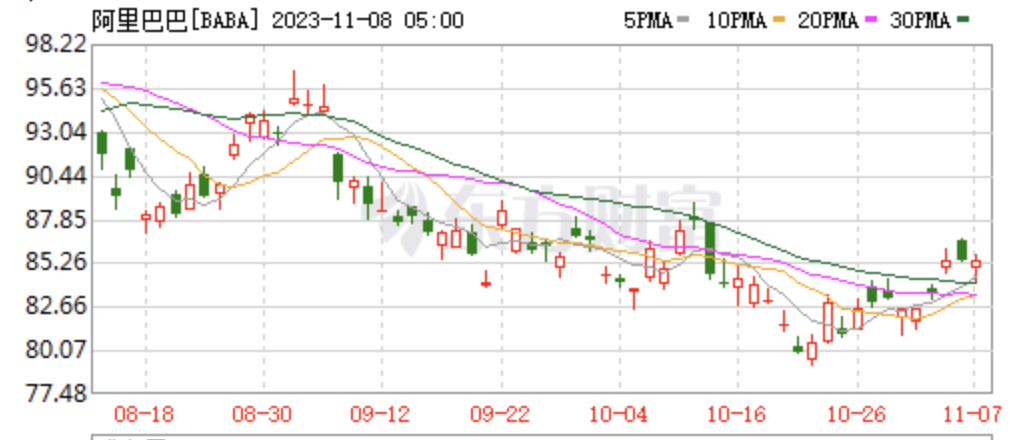Harnessing the Power of OpenAI's Latest Innovations
By mggg
837 words
Introduction: Embracing the Future with OpenAI’s Updates
In the ever-evolving landscape of artificial intelligence, staying updated with the latest advancements is not just a matter of curiosity, but a necessity for those looking to leverage AI for their projects. On the 11th of June, 2023, OpenAI introduced a slew of new features, marking a significant update to their Python SDK, now at version 1.0.0. In this blog, we’ll dive into these updates and explore how they can revolutionize the way we interact with AI.
OpenAI’s Multi-Modal Marvels
GPT-4 Vision: A Picture’s Worth a Thousand Words
One of the most exciting introductions by OpenAI is the multi-modal models that can process both text and images. Imagine asking an AI to analyze a complex image, like the K-line chart of Alibaba’s stock, and receiving insightful analysis as if you were consulting a financial expert. This is now possible with the gpt-4-vision-preview model.

import openai
openai.api_key = "your-api-key"
response = openai.ChatCompletion.create(
model="gpt-4-vision-preview",
messages=[
{
"role": "user",
"content": [
{"type": "text", "text": "What information can you understand from the K-line of the image?"},
{
"type": "image_url",
"image_url": "https://mggg.cloud/img/ali.png",
},
],
}
],
max_tokens=300,
)
print(response.choices[0].message.content)
output:
The image appears to show a candlestick chart for a stock, specifically ticker 'BABA' which is Alibaba Group Holding Limited. Candlestick charts are commonly used in stock trading to show price movements over time, with each candle representing the trading activity for a specific period.
Each candle shows the opening price, closing price, and price fluctuations within the period it represents. A candle is filled or colored if the closing price is below the opening price (indicating a decrease in price), and it is usually white or hollow if the closing price is above the opening price (indicating an increase in price). The 'wick' or 'shadow' extending from the top or bottom of each candle indicates the high and low prices reached during the period.
Additionally, the chart has moving averages overlaid on it, with different time periods indicated by different colored lines:\n\n- The 5-day moving average (5MA) is the purple line.
- The 10-day moving average (10MA) is the orange line.
- The 20-day moving average (20MA) is the green line.
- The 30-day moving average (30MA) is the red line.
These moving averages smooth out price data by creating a single flowing line and provide insight into the direction of the trend. The chart indicates the moving averages are trending downwards during this period, suggesting that there was a general downtrend in the stock's price. However, near the end of the visible timeline, it appears the trend might be
This feature opens up a world of possibilities for developers and businesses alike, allowing for a more comprehensive understanding of visual data.
JSON Mode: Structured Responses for Streamlined Integration
Ensuring Consistency in AI Outputs
Another noteworthy feature is the ability to constrain the model to generate valid JSON responses. This is particularly useful when integrating AI into systems that require structured data. By using the response_format parameter, you can ensure that the AI’s output is in a format that’s immediately usable in your application.
response = openai.ChatCompletion.create(
model="gpt-3.5-turbo-1106",
response_format={"type": "json_object"},
messages=[
{
"role": "system",
"content": [
{"type": "text", "text": "extract name and age from user input, return a json object"},
],
},
{
"role": "user",
"content": [
{"type": "text", "text": "my name is wang and my age is 12, "},
],
}
],
max_tokens=300,
)
output = response.choices[0].message.content
import json
user_data = json.loads(output)
print(user_data)
output:
{'name': 'wang', 'age': 12}
This feature is a game-changer for developers who need to parse AI-generated content without additional processing steps.
System Fingerprint: Reproducibility in AI
Tracking Changes for Consistent Results
OpenAI’s commitment to reproducibility is evident in their introduction of the system_fingerprint. This feature is crucial for applications where consistency in AI outputs over time is critical. Whenever there’s a change in the model configuration that could affect the output, the system_fingerprint changes, allowing developers to track and manage these variations.
response = openai.ChatCompletion.create(
model="gpt-3.5-turbo-1106",
response_format={"type": "json_object"},
messages=[
{
"role": "system",
"content": [
{"type": "text", "text": "extract name and age from user input, return a json object"},
],
},
{
"role": "user",
"content": [
{"type": "text", "text": "my name is wang and my age is 12, "},
],
}
],
max_tokens=300,
)
print(response['system_fingerprint'])
output:
'fp_eeff13170a'
Conclusion: The AI Revolution Continues
OpenAI’s newest changes are not just incremental updates; they represent a leap forward in the AI domain. From multi-modal models to JSON mode responses and system fingerprints, these features address the growing need for more sophisticated, reliable, and integrated AI solutions. As we continue to explore the capabilities of these innovations, the potential for AI to transform industries and everyday life becomes increasingly tangible.
For developers, businesses, and enthusiasts alike, now is the time to experiment with these new features. Whether you’re analyzing financial charts or integrating AI into your software, OpenAI’s latest offerings are here to ensure that your journey with AI is as seamless and productive as possible. Dive in, and let’s shape the future together!